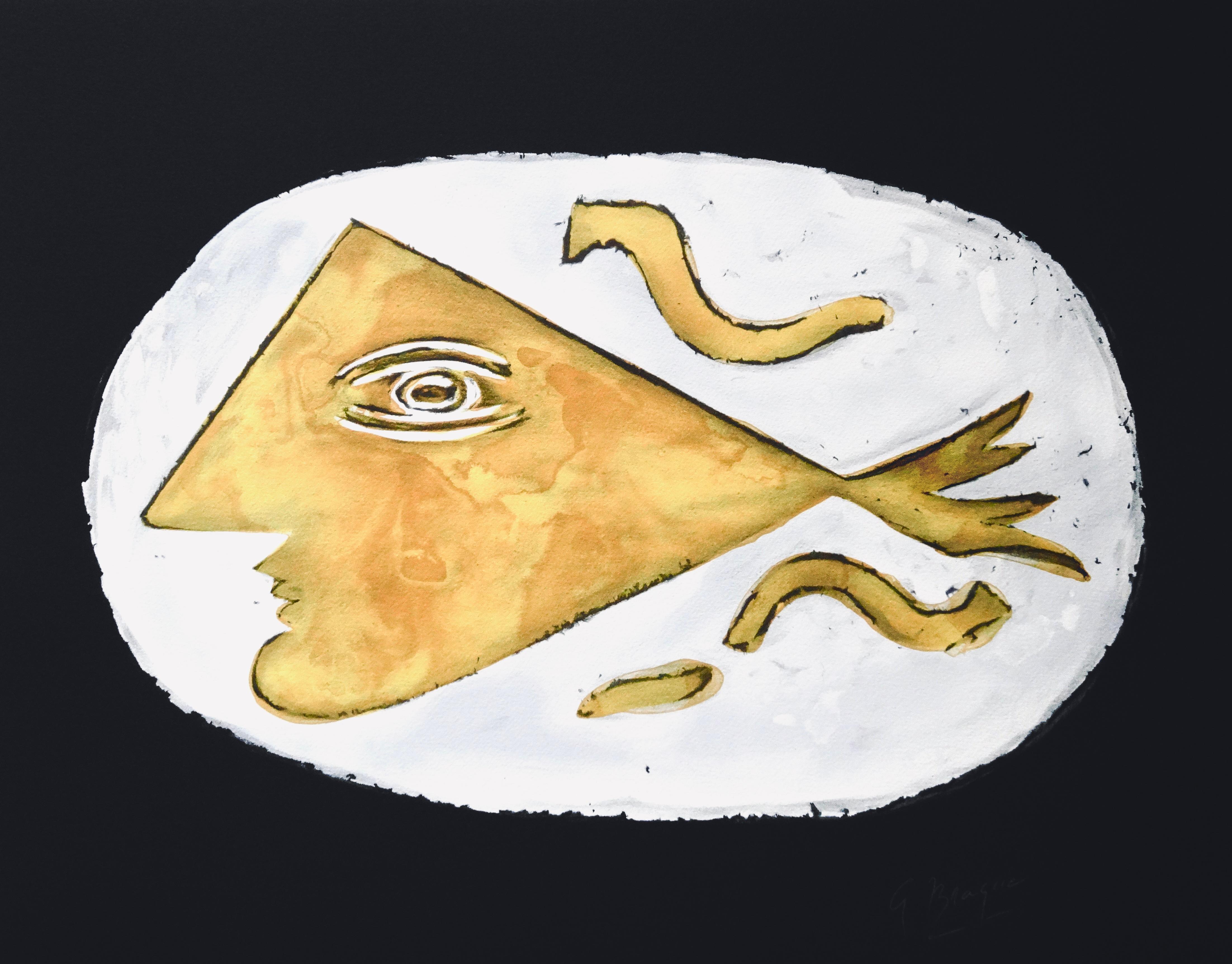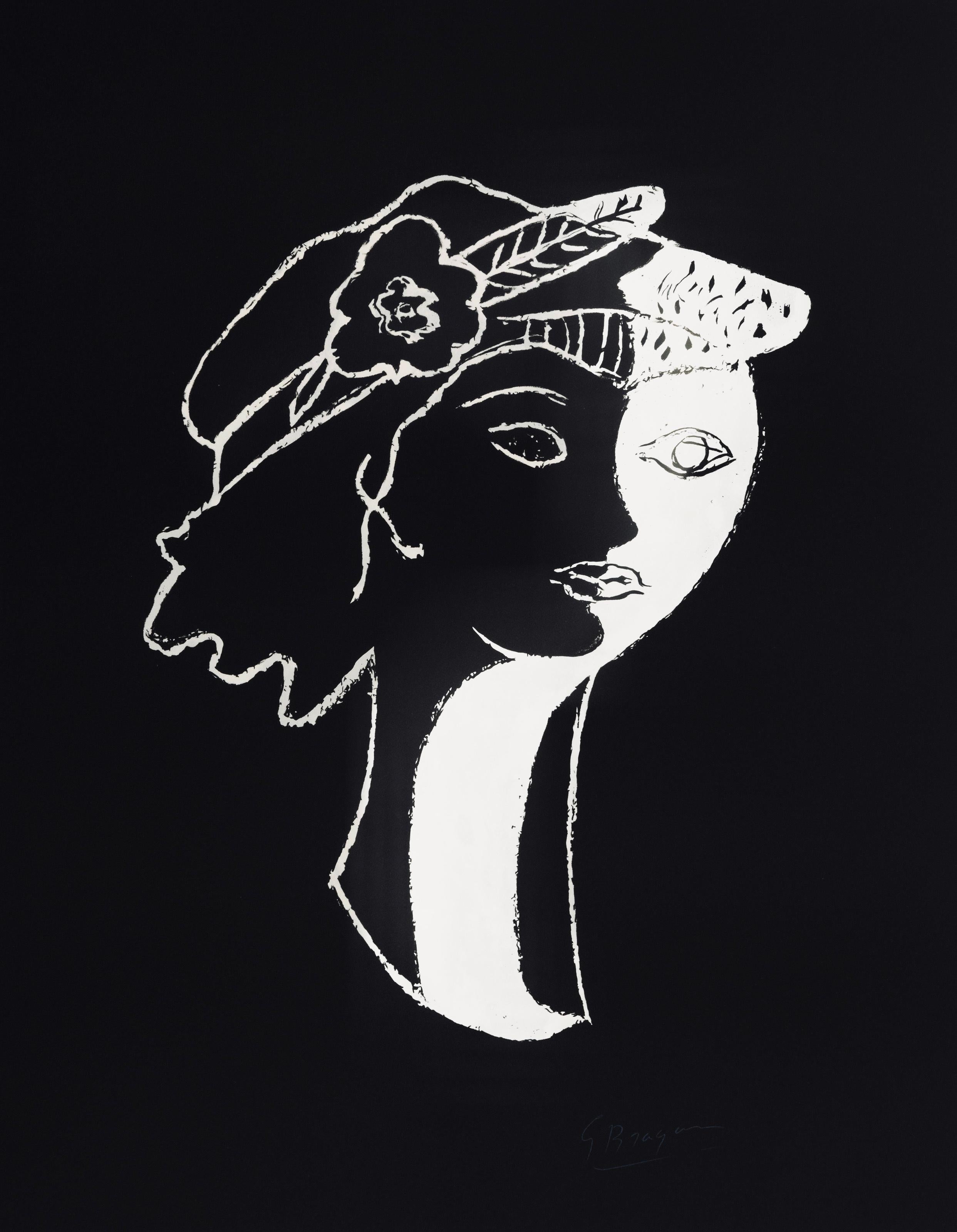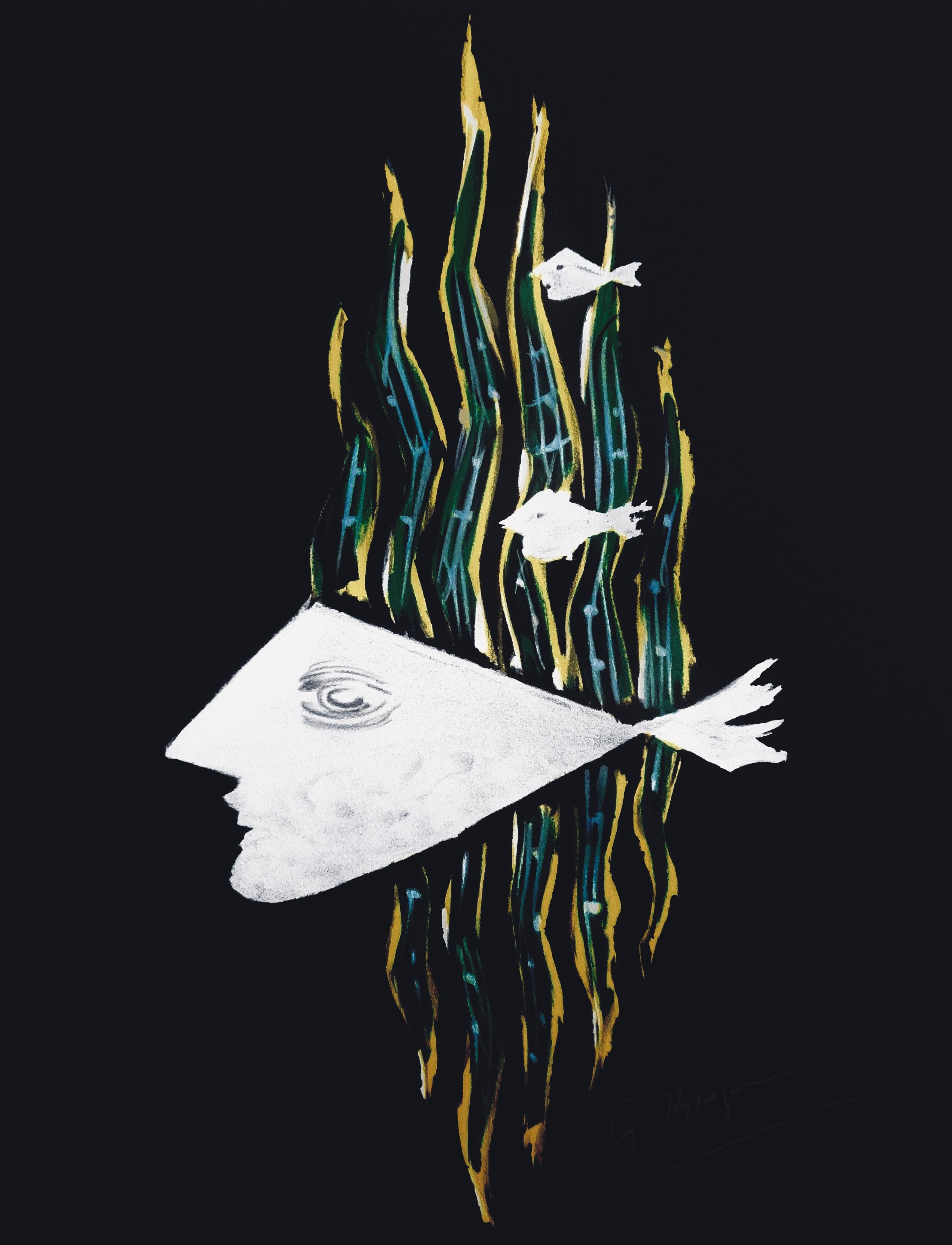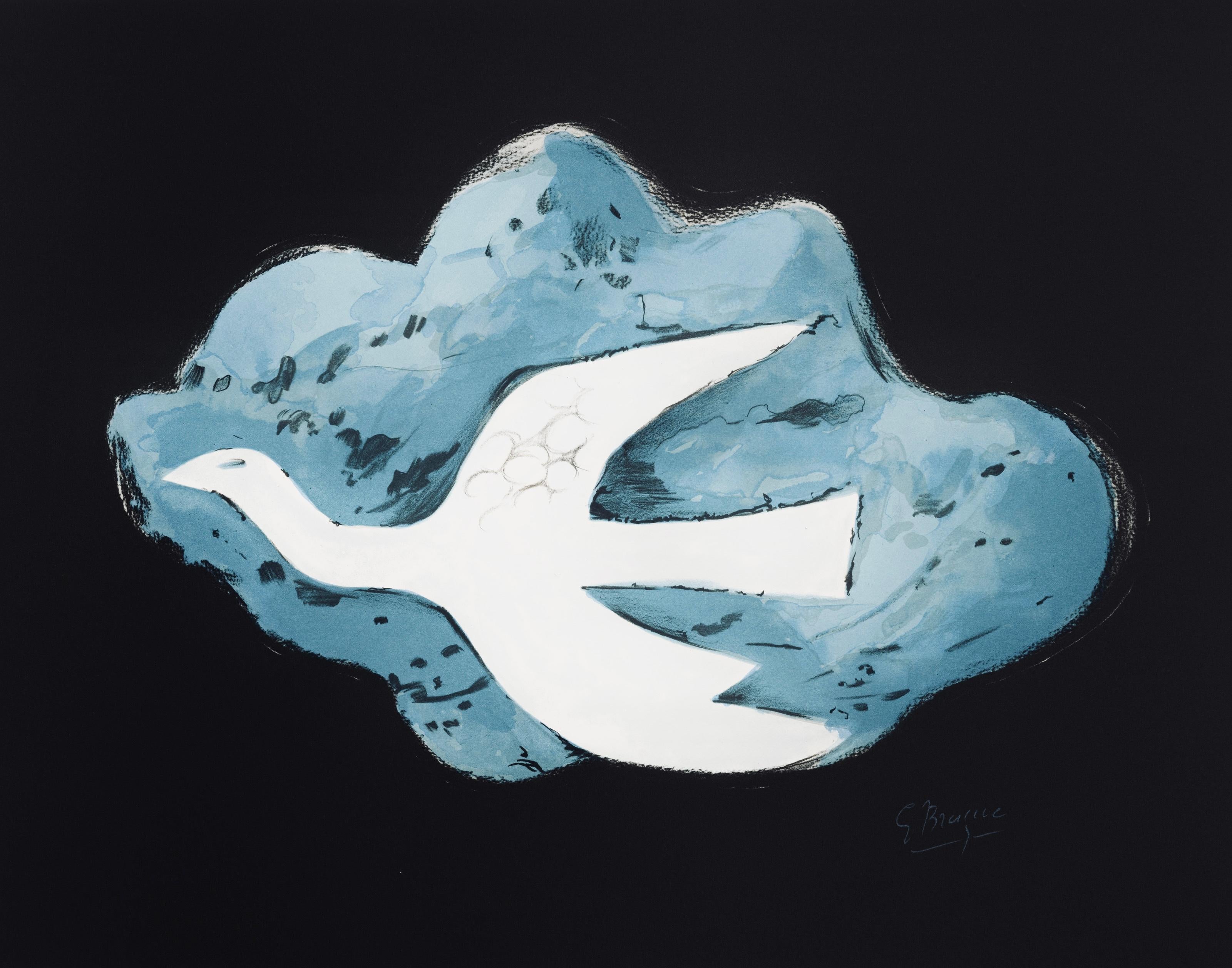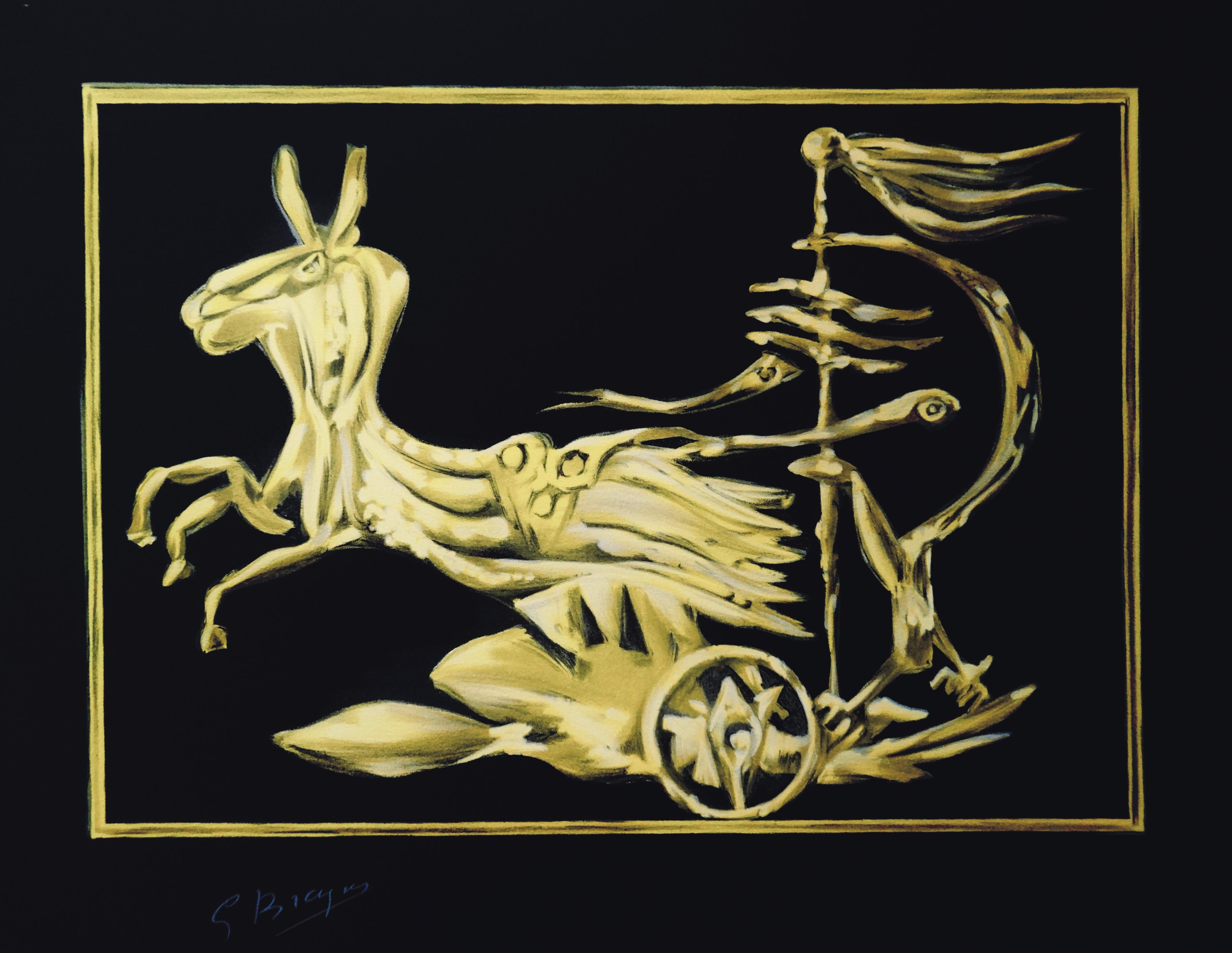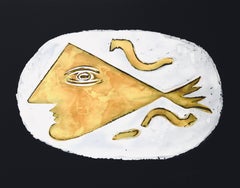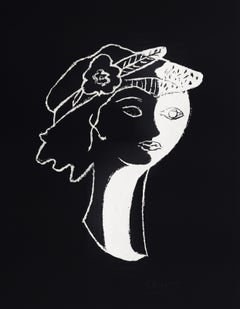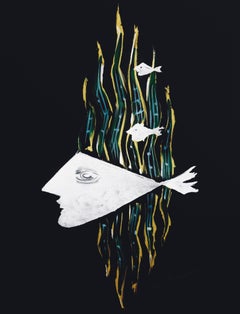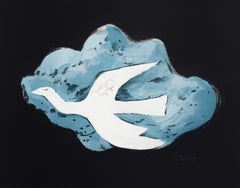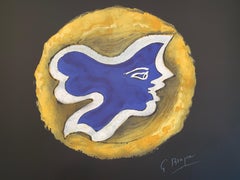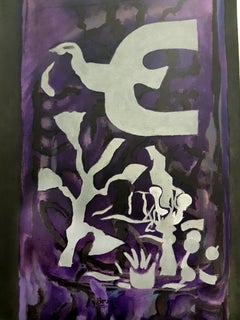Items Similar to Braque, Hecate, Œdipe roi de Sophocle (after)
Want more images or videos?
Request additional images or videos from the seller
1 of 10
Braque, Hecate, Œdipe roi de Sophocle (after)1988
1988
$956
$1,19520% Off
£732.54
£915.6720% Off
€842.59
€1,053.2420% Off
CA$1,366.73
CA$1,708.4220% Off
A$1,484.52
A$1,855.6520% Off
CHF 785.93
CHF 982.4120% Off
MX$17,924.66
MX$22,405.8220% Off
NOK 9,811.53
NOK 12,264.4120% Off
SEK 9,294.86
SEK 11,618.5820% Off
DKK 6,291.55
DKK 7,864.4320% Off
About the Item
Lithograph on grand vélin d'Arches pur chiffon spécialement fabriqués paper. Inscription: signed in the plate and unnumbered, as issued. Good condition. Notes: from the folio, Œdipe roi de Sophocle, 12 lithographies de Georges Braque, 1988. Published by Éditions Armand et Georges Israël, Paris; printed by Atelier Art-Litho, Paris, November 9, 1988, in an edition of 298. Excerpted from the folio (translated from French), The printing of Georges Braque's lithographs was entrusted to the Atelier Art-Litho. The chosen papers are grand vélin d'Arches pur chiffon, specially manufactured for this edition. The casing, with a size of 60 x 47 cm was made by the Maître artisan, Jean Duval. The typography was composed in New Baskerville. Finished printing on November 9, 1988.
GEORGES BRAQUE (1882-1963) was a major 20th-century French painter, collagist, draughtsman, printmaker and sculptor. His most notable contributions were in his alliance with Fauvism from 1905, and the role he played in the development of Cubism. Braque's work between 1908 and 1912 is closely associated with that of his colleague Pablo Picasso. Their respective Cubist works were indistinguishable for many years, yet the quiet nature of Braque was partially eclipsed by the fame and notoriety of Picasso.
- Creation Year:1988
- Dimensions:Height: 17.72 in (45.01 cm)Width: 22.83 in (57.99 cm)
- Medium:
- Movement & Style:
- After:Georges Braque (1882 - 1963, French)
- Period:
- Condition:
- Gallery Location:Southampton, NY
- Reference Number:1stDibs: LU1465215337652
About the Seller
4.9
Platinum Seller
Premium sellers with a 4.7+ rating and 24-hour response times
Established in 1978
1stDibs seller since 2021
1,197 sales on 1stDibs
Typical response time: <1 hour
- ShippingRetrieving quote...Shipping from: Southampton, NY
- Return Policy
Authenticity Guarantee
In the unlikely event there’s an issue with an item’s authenticity, contact us within 1 year for a full refund. DetailsMoney-Back Guarantee
If your item is not as described, is damaged in transit, or does not arrive, contact us within 7 days for a full refund. Details24-Hour Cancellation
You have a 24-hour grace period in which to reconsider your purchase, with no questions asked.Vetted Professional Sellers
Our world-class sellers must adhere to strict standards for service and quality, maintaining the integrity of our listings.Price-Match Guarantee
If you find that a seller listed the same item for a lower price elsewhere, we’ll match it.Trusted Global Delivery
Our best-in-class carrier network provides specialized shipping options worldwide, including custom delivery.More From This Seller
View AllBraque, Hera, Œdipe roi de Sophocle (after)
By Georges Braque
Located in Southampton, NY
Lithograph on grand vélin d'Arches pur chiffon spécialement fabriqués paper. Inscription: signed in the plate and unnumbered, as issued. Good condition. Notes: from the folio, Œdipe ...
Category
1980s Modern Landscape Prints
Materials
Lithograph
Braque, Persephata, Œdipe roi de Sophocle (after)
By Georges Braque
Located in Southampton, NY
Lithograph on grand vélin d'Arches pur chiffon spécialement fabriqués paper. Inscription: signed in the plate and unnumbered, as issued. Good condition. Notes: from the folio, Œdipe ...
Category
1980s Modern Landscape Prints
Materials
Lithograph
Braque, Hébé, Œdipe roi de Sophocle (after)
By Georges Braque
Located in Southampton, NY
Lithograph on grand vélin d'Arches pur chiffon spécialement fabriqués paper. Inscription: signed in the plate and unnumbered, as issued. Good condition. Notes: from the folio, Œdipe ...
Category
1980s Modern Landscape Prints
Materials
Lithograph
Braque, Aegle, Œdipe roi de Sophocle (after)
By Georges Braque
Located in Southampton, NY
Lithograph on grand vélin d'Arches pur chiffon spécialement fabriqués paper. Inscription: signed in the plate and unnumbered, as issued. Good condition. Notes: from the folio, Œdipe ...
Category
1980s Modern Landscape Prints
Materials
Lithograph
Braque, Le Char de Médée, Œdipe roi de Sophocle (after)
By Georges Braque
Located in Southampton, NY
Lithograph on grand vélin d'Arches pur chiffon spécialement fabriqués paper. Inscription: signed in the plate and unnumbered, as issued. Good condition. Notes: from the folio, Œdipe ...
Category
1980s Modern Landscape Prints
Materials
Lithograph
Braque, Acheloos, Œdipe roi de Sophocle (after)
By Georges Braque
Located in Southampton, NY
Lithograph on grand vélin d'Arches pur chiffon spécialement fabriqués paper. Inscription: signed in the plate and unnumbered, as issued. Good condition. Notes: from the folio, Œdipe ...
Category
1980s Modern Landscape Prints
Materials
Lithograph
You May Also Like
Mythology : Hera
By (after) Georges Braque
Located in Paris, IDF
after Georges BRAQUE
Mythology : Hera
MEDIUM : Lithograph
PRINTER : Atelier Art-Litho
EDITOR : Armand ISRAEL, Paris
SIGNATURE : Printed
LIMITED : 399 copies unumbered
PAPER : Arches...
Category
Late 20th Century Cubist Figurative Prints
Materials
Lithograph
Hecate - after Georges Braque - Lithograph - 1988 - Figurative Print
By (after) Georges Braque
Located in Sint-Truiden, BE
Color lithograph after a gouache by Georges Braque from the edition of 398 published by Armand & Georges Israel in 1988. Printed signature.
Artwork entirely made in France: from th...
Category
1980s Cubist Figurative Prints
Materials
Lithograph
The Moon - Lithograph (399 copies)
By (after) Georges Braque
Located in Paris, IDF
Georges BRAQUE (after)
The Moon
MEDIUM : Lithograph
PRINTER : Atelier Art-Litho
EDITOR : Armand ISRAEL, Paris
SIGNATURE : Printed
LIMITED : 399 copies unumbered
PAPER : Arches vellu...
Category
Late 20th Century Modern Figurative Prints
Materials
Lithograph
Lithograph after Georges Braque
Located in Collonge Bellerive, Geneve, CH
Lithograph after Georges Braque
From the deluxe art review, Derrière le Mirroir
1964
Printed signature
Dimensions: 38 x 28 cm
DLM No. 148, 1964
Edition: Foundation Maeght at Saint P...
Category
1960s Modern Figurative Prints
Materials
Lithograph
Hera - after Georges Braque - Lithograph - 1988 - Figurative Print
By (after) Georges Braque
Located in Sint-Truiden, BE
Color lithograph after a gouache by Georges Braque from the edition of 398 published by Armand & Georges Israel in 1988. Printed signature.
Artwork en...
Category
1980s Cubist Figurative Prints
Materials
Lithograph
After Georges Braque - Antiborée - Lithograph
Located in Collonge Bellerive, Geneve, CH
Lithograph after Georges Braque.
Signed in the plate
Edition of 150
Dimensions: 76 x 117 cm
Bibliography:
« Les Métamorphoses de Braque» of Heger de Loewenfeld and Raphaël de Cuttoli , Editions FAC, Paris, 1989.
In 1961 Georges Braque decided with his laidary friend Heger de Loewenfeld to pick up certain of his works to in order to create artworks, this beautiful litograph is one of them.
Héméra in the Mythology:
In Greek mythology Hemera was the personification of day and one of the Greek primordial deities. She is the goddess of the daytime and, according to Hesiod, the daughter of Erebus and Nyx (the goddess of night). Hemera is remarked upon in Cicero's De Natura Deorum, where it is logically determined that Dies (Hemera) must be a god, if Uranus is a god. The poet Bacchylides states that Nyx and Chronos are the parents, but Hyginus in his preface to the Fabulae mentions Chaos as the mother/father and Nyx as her sister.
She was the female counterpart of her brother and consort, Aether (Light), but neither of them figured actively in myth or cult. Hyginus lists their children as Uranus, Gaia, and Thalassa (the primordial sea goddess), while Hesiod only lists Thalassa as their child.
The father of Cubism
Three Cubist that distinguishes art historian periods were initiated and developed by Georges Braque: The Cubist Cézanne (1907-1909), Executive (1909-1912) and synthetic (1912-1922).
Post-Impressionist and fawn, Braque no longer adheres to the contingency of a decorative way or the other. Cézanne’s paintings exhibited at the Grand Palais during the retrospective of 1907 are a revelation: Cézanne sought and invented a pictorial language. In his footsteps, Braque went to the South with the reasons of the Master. He returned with Estaque landscapes and surprising Ciotat it keeps Cezanne geometric model and retains the “passages” continuity from one surface to another to create the sensation of “turning around” of the object represented. But he wants to go after the consequences of the vision of Cezanne. In his paintings Houses in L’Estaque (1908) it simplifies the volumes of houses, neglects detail by removing doors and windows: the plastic rhythm that builds the table. Large Nude , a masterpiece of the period, can be considered the first work of Cézanne cubism .
Systematizing and deepening Braque discoveries open the door analytical cubism. In 1909, his painting became more cerebral than sensual. The pattern is recreated in the two-dimensionality of the canvas, leaving aside any illusionistic perspective. In Still Life with Violin, objects are analyzed facets according to their characteristic elements, each facet referring to a particular view of the object. There are so many facets of points selected view: Table reflects the knowledge of the object and the ubiquity of the eye. Moreover, Braque is looking for the essence of the objects in the world rather than their contingency, which explains the absence of light source and use of muted colors (gray, ocher), contingent aspects of the object . But formal logic has stepped facets, erased any anecdote to the object and ultimately led to his painting a hermetic more marked on the edge of abstraction (see the series of Castle Roche-Guyon ).
Braque, anxious to keep the concrete and refusing at all costs that the logic of Cubism takes the paintings to abstract, reintroduced signs of reality in his paintings in 1912 marks the beginning of Synthetic Cubism. Historians speak of “signs of real” rather than reality because what interests Braque, this is not to put reality into a table, but to create a painting which, by its language, refers to the real. To do this, he invented two major techniques XX th century inclusions and contributions. The inclusions consist of painting objects that have no real depth, materials (wallpaper in Nature morte aux playing cards faux wood is a pictorial inclusion) or letters (calligraphic inclusion in Portuguese ), made first brush and a few months later stencil. Contributions are defined in contrast with the collage on canvas of foreign materials: glued or sand paper, sawdust, etc.. Regarding the collages, Braque used for the first time in September 1912 a piece of adhesive paper imitating faux wood Compote...
Category
1950s Cubist Animal Prints
Materials
Lithograph
More Ways To Browse
Alain Moulis
Alex Katz Forest
Alexander Calder Litho
Alicia Rhett
Andy Warhol Chanel Lithograph
Banksy Palestine
Bernard Buffet Place De La Concorde
Bernard Gantner Lithograph
Bernard Gantner On Sale
Bernard Hay
Charles Wells Prints
Chartreuse Poster
Christo Pink Island
Claude Monet Etching
Claughton Pellew
Dali Alpes
Dali Tienta
Daniel Barney
